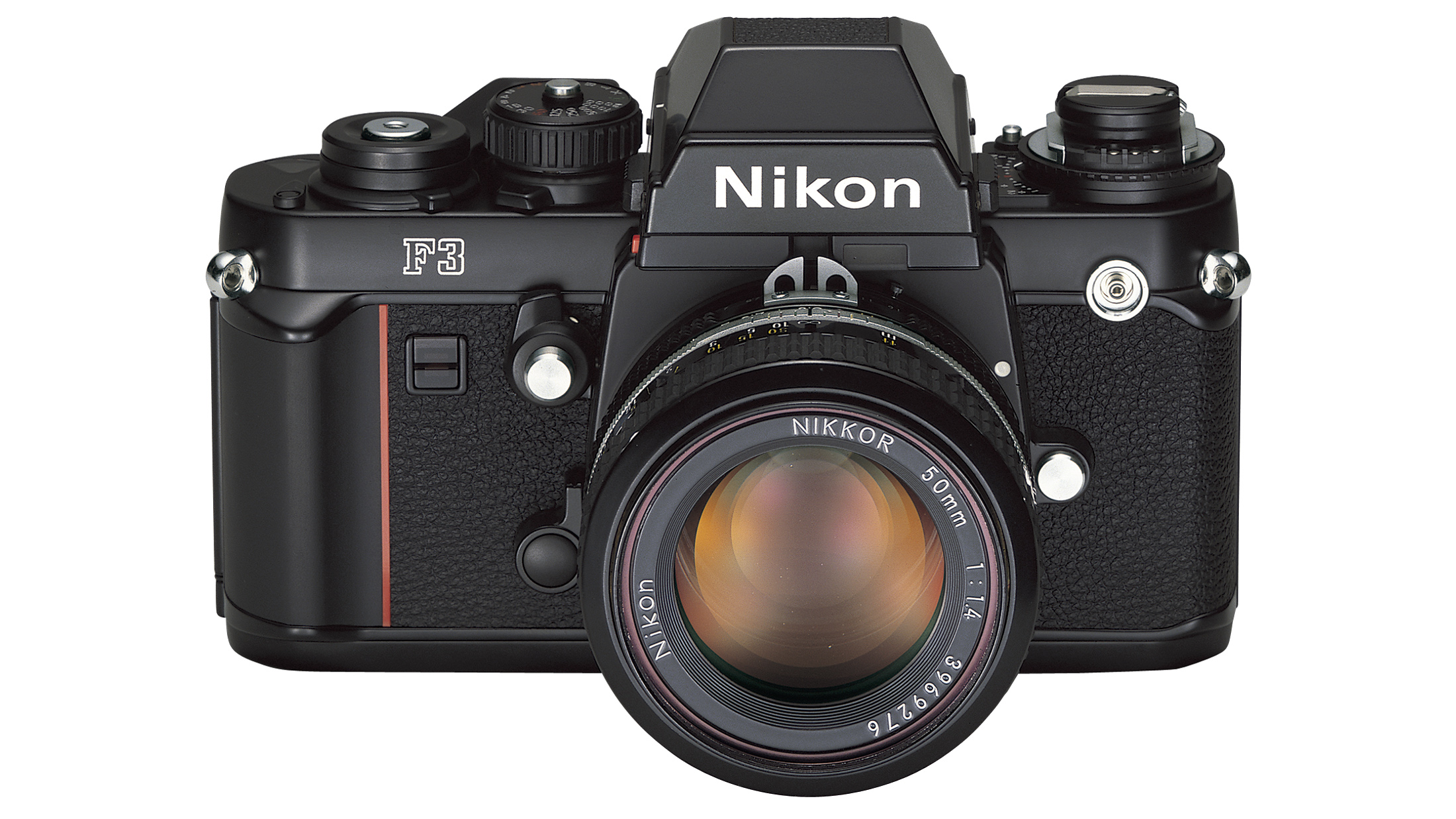The best pulse oximeter
Monitor your blood oxygen levels with the best pulse oximeters to keep you and your family healthy
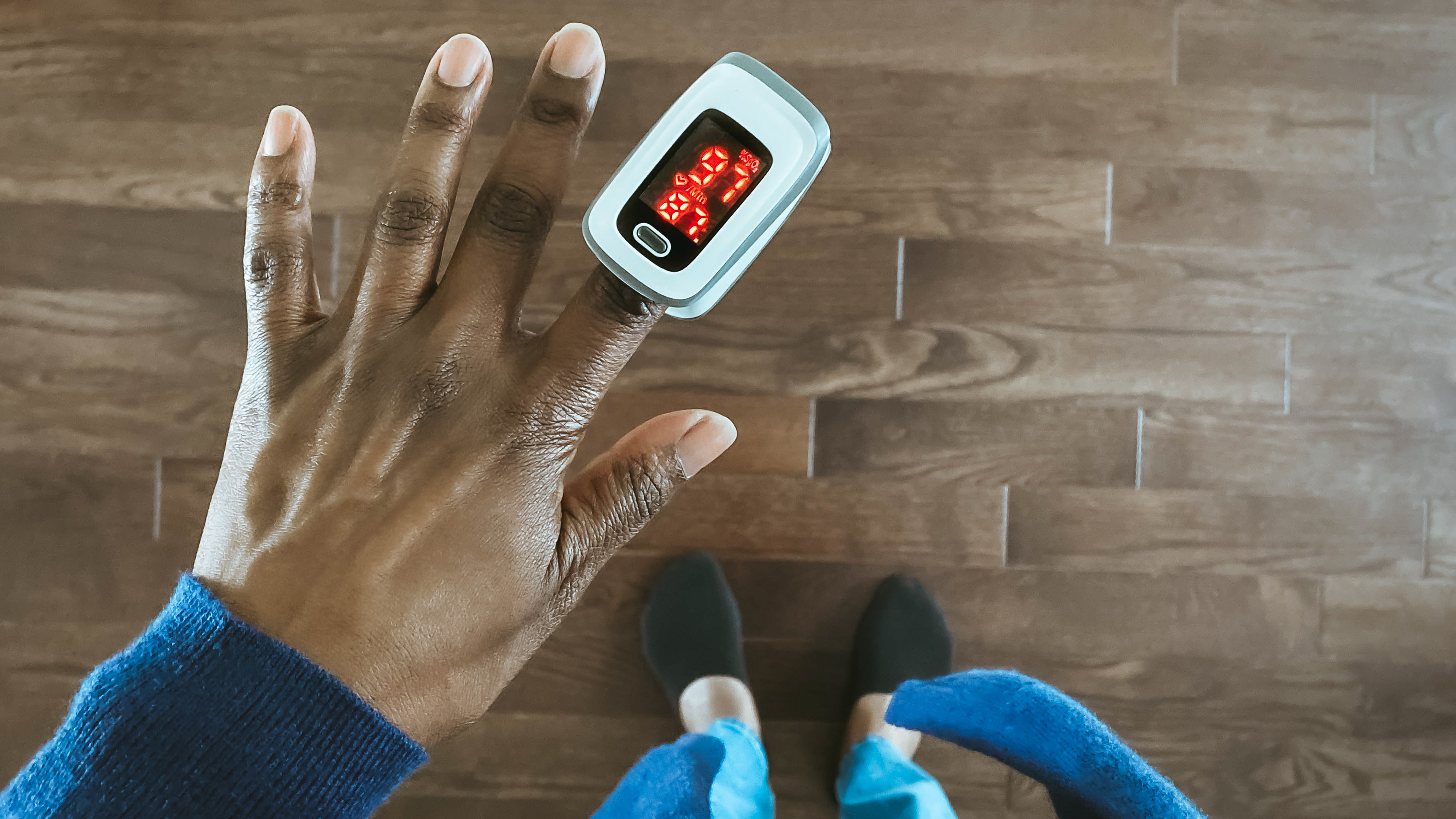
Looking for the best pulse oximeter? This guide is here to help you choose the right one - and help show you the best price you can get it for.
Home pulse oximeters are a great tool for keeping on top of your blood-oxygen levels – and are now highly affordable. If your home medical kit consists of nothing more than sticking plasters and antiseptic, you might be surprised such a thing is even possible. For many, though, it is very desirable to monitor blood oxygen saturation (SpO2), a figure which can reveal illness even when the patient isn’t aware of it and do so using optical technology. Definitely something to add to your medicine cupboard alongside the infrared thermometer.
Blood should have an SpO2 of 95-100%. Below 90% is dangerously low and called hypoxemia. A pulse oximeter works a bit like a digital camera, as SpO2 can be detected optically by passing light from an emitter to a sensor somewhere arterial blood is flowing (like the middle finger of the dominant hand). The higher the oxygenation, the fewer light frequencies pass through. The devices also have to compensate for the distance the light is traveling and any ambient light for accurate results.
Certain conditions require regular monitoring, while athletes and pilots can all benefit from having their own devices. In a time when acute respiratory diseases are rampant (SARS, Covid-19) and test pricing is on the rise, it’s possible to detect a drop in lung capacity by taking regular readings, though of course you can only help your doctor, not replace them!
The best pulse oximeter
Why you can trust Digital Camera World
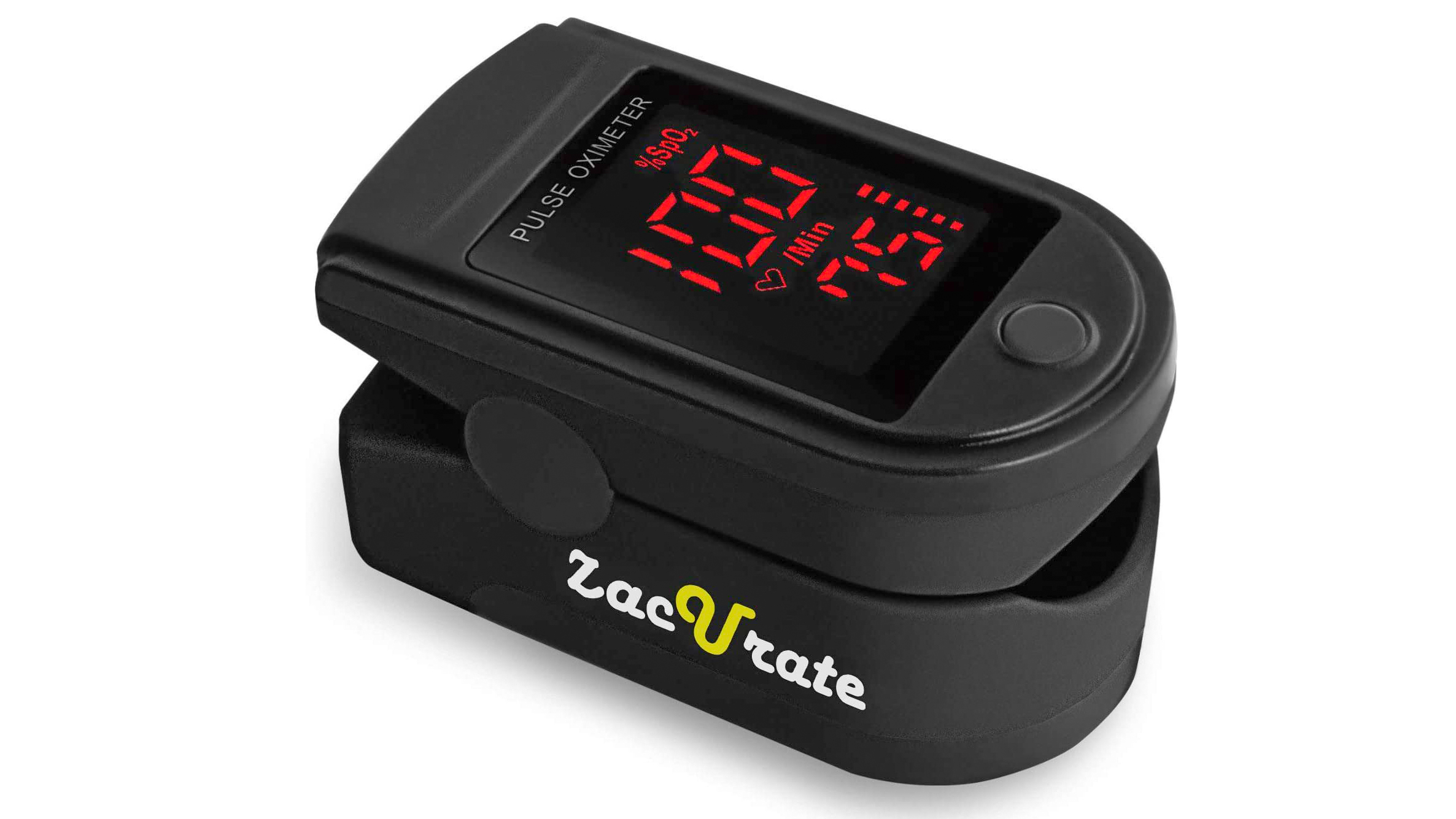
1. Zacurate Pro Series 500DL
Specifications
Reasons to buy
Reasons to avoid
Zacurate’s 500DL is not their first finger pulse oximeter designed for the home market, so they’ve had the chance to address a few issues, not least that the predecessor could only display up to 99% rather than the 100% maximum SpO2. Carrying CE & FDA approval, this device can produce a reading to its large, clear display in 10 seconds, and (according to the manufacturer) is less susceptible to inaccuracies if slightly moved and has better ambient light compensation. The 500DL is intended for adults but can read any fingers large enough, so kids over 12 should be fine. There is no memory, but the batteries should be good for 40 hours worth of reading so even with the ten seconds it takes to shut down after use that one set of AAAs will last a while! We certainly appreciated a silicon cover and lanyard coming in the kit (which cost less than the cover for a new phone).
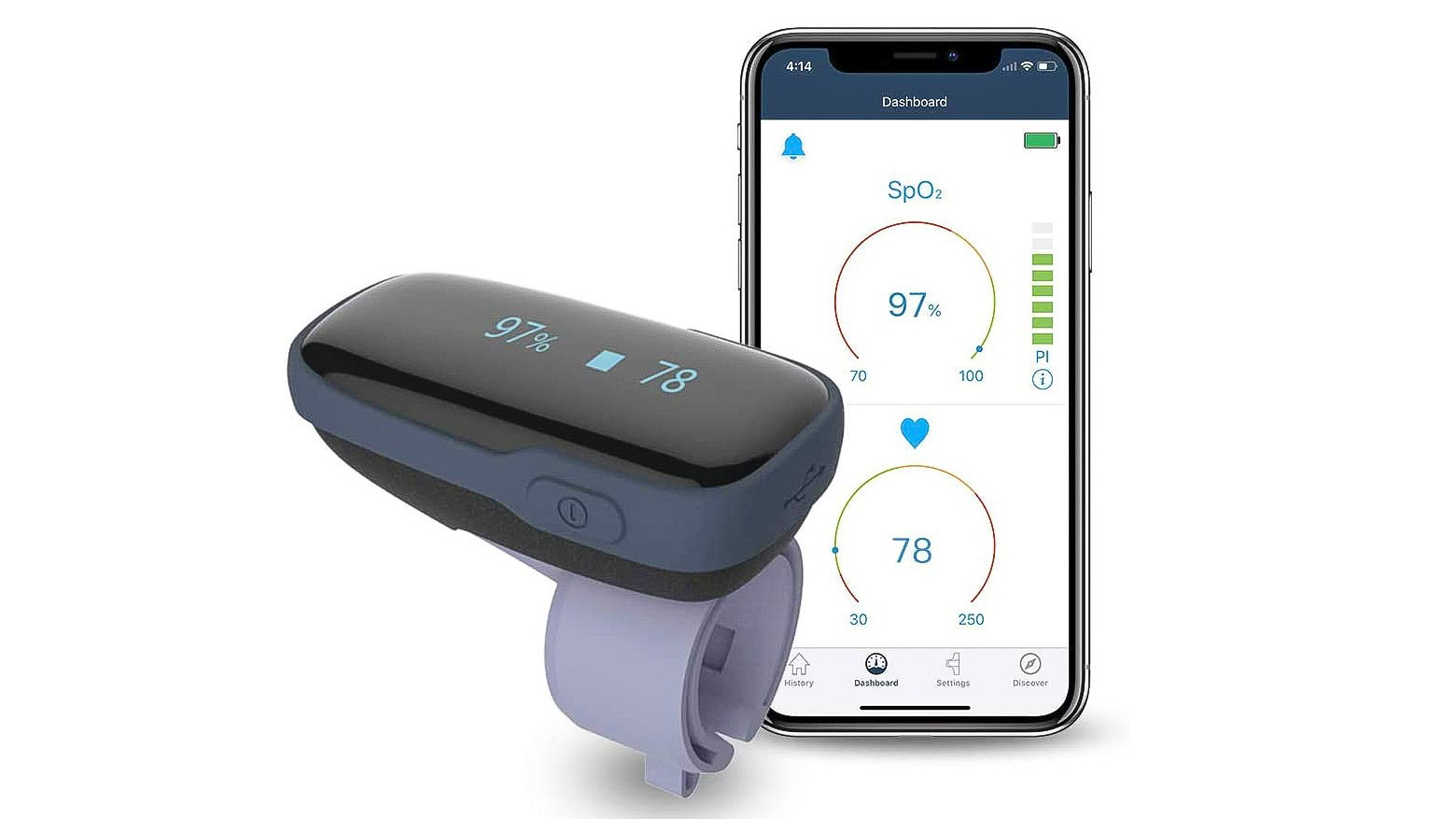
2. Wellue o2Ring
Specifications
Reasons to buy
On the face of it, this is a slightly chunky (3.8cm/1.5in) black polished thumb-ring. A second glance shows you it’s no piece of jewellery though – the discrete built in display giving the game away. Inside the dark pebble is a rechargeable battery providing up to 16 hours of recording, at 1s intervals, of blood oxygen, pulse (BPM), and motion. All your data can be synced over Bluetooth 4 to your App or desktop (the latter offering printing or PDF export). The ring can also be set to vibrate should it drop below the level of your choice. Marketed as an alternative for wrist-worn alternatives, this certainly seems more convenient, though the outlay is considerably more than a simple ‘dumb’ finger measure, but if you’re monitoring your sleep this is an excellent choice (you can also use it without removing nail varnish too, if that’s important to you!).

3. Hermano Baby & Children Digital Fingertip Pulse Oximeter
Specifications
Reasons to buy
Reasons to avoid
Whether featuring a playful design will fool the kids into thinking this is not a medical device is open to debate. My 4 year old never fell for the sweet taste in kids medicines, and would see right through this. So the styling is never going to make your kids sit still for ten seconds, but it’s still handy to take readings from children from 1 to 12 years (other kids fingertip devices only work from 2 years). Larger ‘adult’ fingertip readers can produce incorrect results if they don’t grip the finger properly, so if your kids are your concern your choices are limited. The 200mAh lithium battery and Type-C USB recharge connector does make rival AAA-powered devices seem a bit ‘old tech’, but there is a bump in price which can’t just be explained by the cartoon penguin/bird.
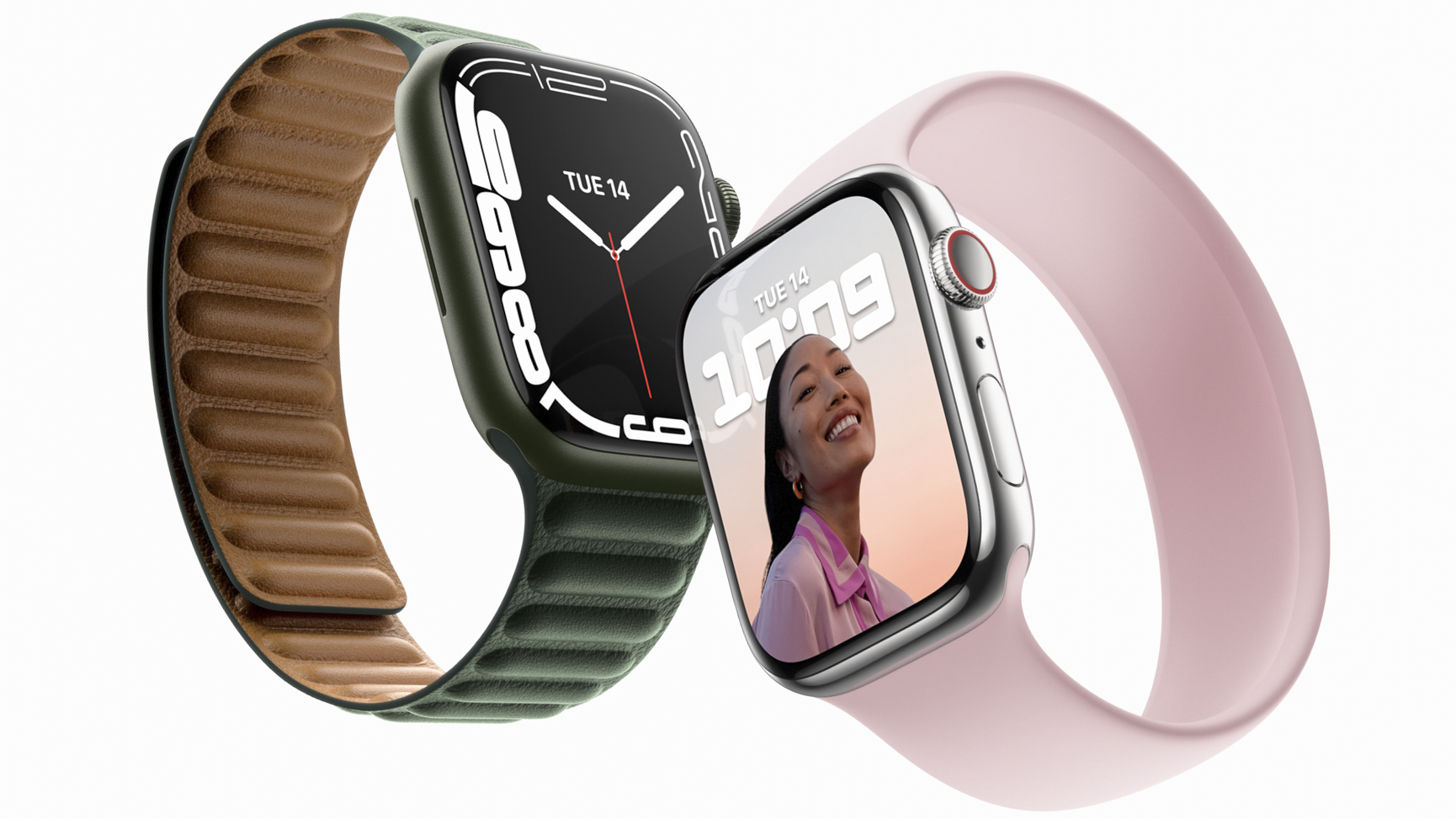
4. Apple Watch Series 7
Specifications
Reasons to buy
Reasons to avoid
Swimproof, IPX6 dust resistant and with an every growing range of functions – including an ECG, as well as all the existing motion and GPS tracking tools the latest Apple Watch is definitely something to consider if tracking your pulse oximeter data is important to you. The Series 7 benefits from a larger face, but also carries all the existing tools which now include a sleep app which uses motion sensors to measure how you sleep (since Series 6). As we move into personal responsibility past the pandemic, the motion sensor can even time how long wash your hands. On the matter at hand, a cluster of four IR LEDs can take a SpO2 measurement in just 15 seconds, and monitor the values at intervals during the day. The VO2 Max data is (should you choose) available to a range of apps – and you can even get a notification if it drops.
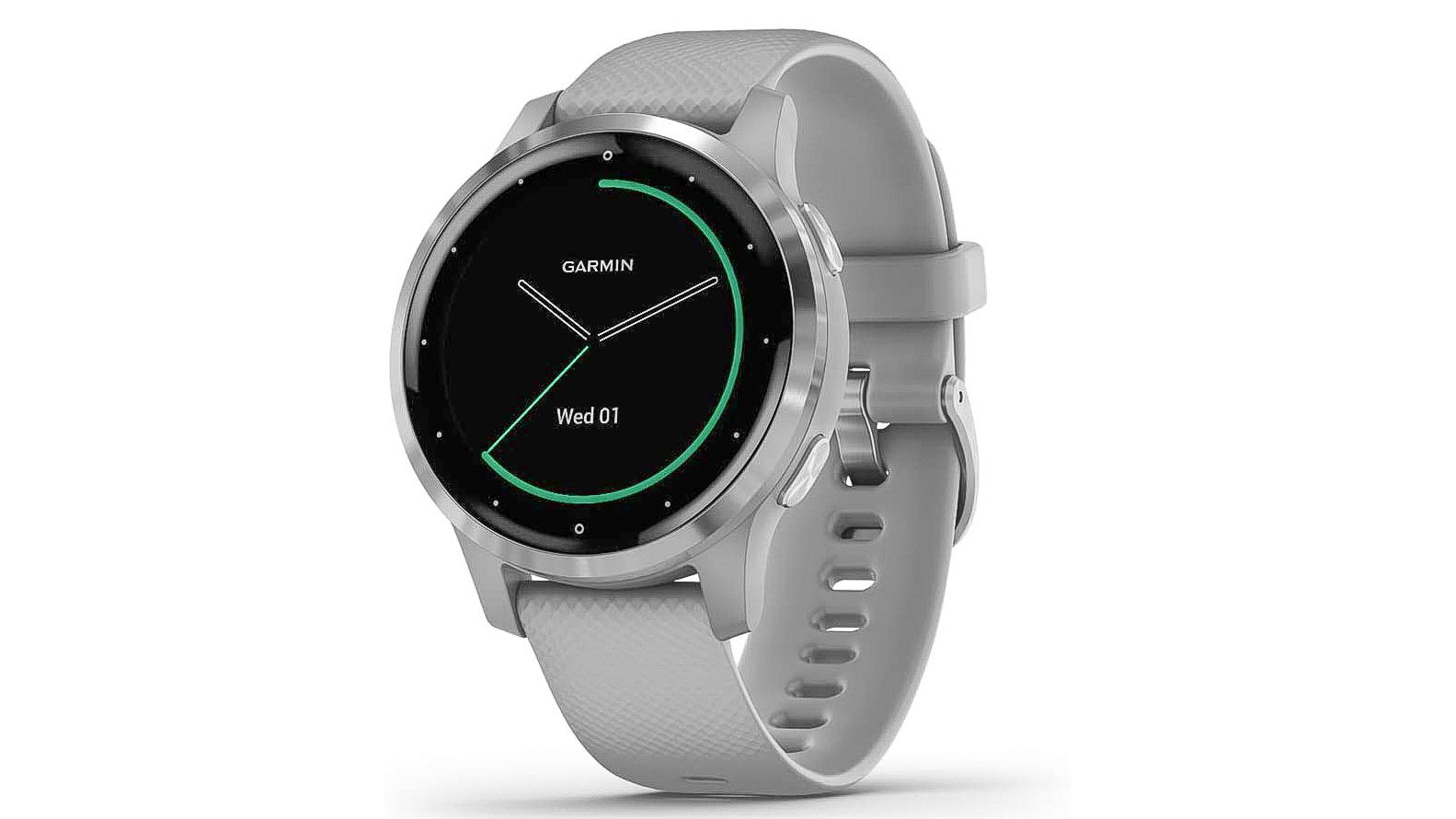
5. Garmin Vivoactive 4
Specifications
Reasons to buy
Reasons to avoid
Monitoring blood-oxygen levels is useful for athletes, especially mountaineers who have to be sure they’re coping with dropping oxygen levels at altitude. While the Garmin’s built-in monitor is not medical grade, it can certainly help provide an insight, and of course is complemented by heart rate, body energy, hydration, sleep and stress monitoring among others. The watch also boasts GPS and coaching features to help you train, as well as contactless payments and a music player (if you provide compatible headphones). All that is before you pair with a smart phone for notifications and more, making this a very handy way to keep yourself moving in places you wouldn’t take your phone though, so if you’re thinking of getting a smart watch and want to follow blood oxygen then Apple may have caught up but Garmin were here first and offer both this with a 45mm face, a smaller Garmin Vivoactive 4S with a 40mm face, and a thinner, lighter Venu watch too. We preferred the ruggedness and battery life of the Vivoactive 4.

6. Owlet Smart Sock 2
Specifications
Reasons to buy
Reasons to avoid
Some parents will baulk at the cost of a device with an 18-month lifespan (once your baby hits 25lbs or 11kg, they’ve outgrown it), but for nervous first-time parents this product can provide significant peace of mind, and makes it possible to move the baby into its own room sooner. The ‘sock’ (there are three in the box, washable, and of increasing size), sends data from its pulse oximeter to a base station via Bluetooth and, if all is within parameters, the flat puck-like base station glows a reassuring green. If there is cause for alarm it’ll turn red and you’ll be notified by and alarm and by your smart phone. A nice touch is that a yellow warning just plays a nursery rhyme, before going the whole red. It isn’t cheap, but might make a lot of sense for those whose pediatricians have detected specific concerns, like apnea. It’s also wise to buy from a trusted store that will accept returns if the baby’s skin reacts badly to the sock.

7. Garmin Enduro
Specifications
Reasons to buy
Reasons to avoid
Garmin’s pulse oximeter makes a great deal of sense on a solidly-built watch like this since it can be used to determine how your body is acclimatizing to an upcoming challenge like altitude. Because of the battery life, the pulse oximeter can optionally be used all day and for sleep monitoring. The information is combined with heart rate data to help track your sleep and keep an eye on your stress. Not only that, but the watch is equipped with an array of other tech to help you push your body (and get adequate rest times). Apple Watch owners will be deeply envious of the up-to 80 hours which this device can keep going for, topping itself up via solar energy (if you’re lucky enough to be training in good sunlight for about 3 hours, that is). The Enduro has a distinct look, so won’t be for everyone, but the always-on screen and solid design is ideal for sports fanatics.
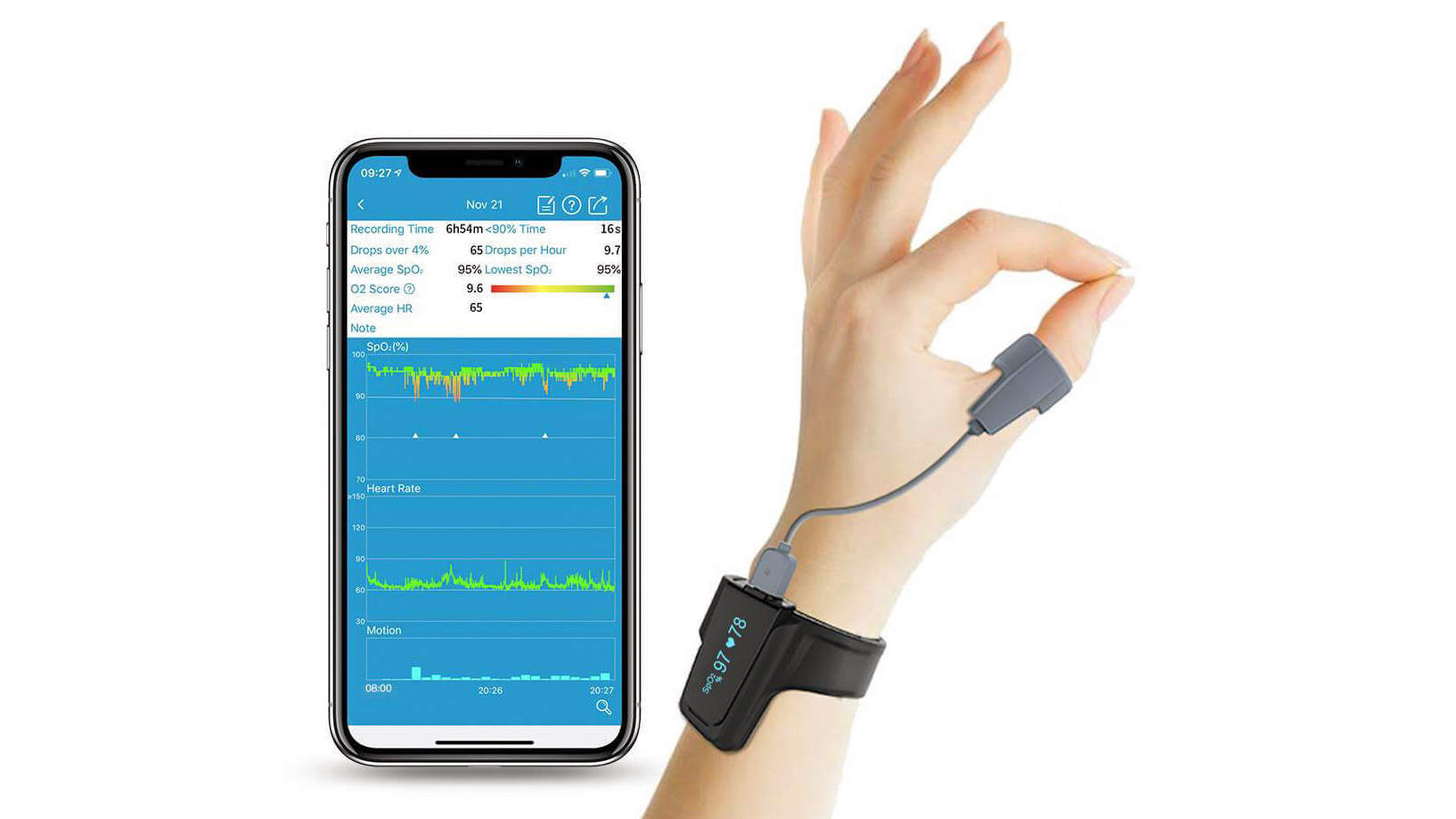
8. Wellue Checkme o2 Max Wrist Monitor
Specifications
Reasons to buy
Reasons to avoid
Worn on the wrist, this monitor collects and records information on SpO2, heart rate and motion into a built-in memory (it has four ten-hour memories). There is also a rubber piece around the thumb, which is too soft to cause numbness but is something you might only want to wear if you think there is cause to collect this data. By taking readings at intervals of half a second, the tracker is able to build up a pretty rich set of data which you can upload directly to a computer via a USB port (also how you charge it) or view on your phone screen. It can store up to 4 nights before it starts recording over old data. The app has extra features, like adjusting the device’s alert threshold, which is handy as it can be set to vibrate if there is cause for medical alert (but does mean a phone is essential).
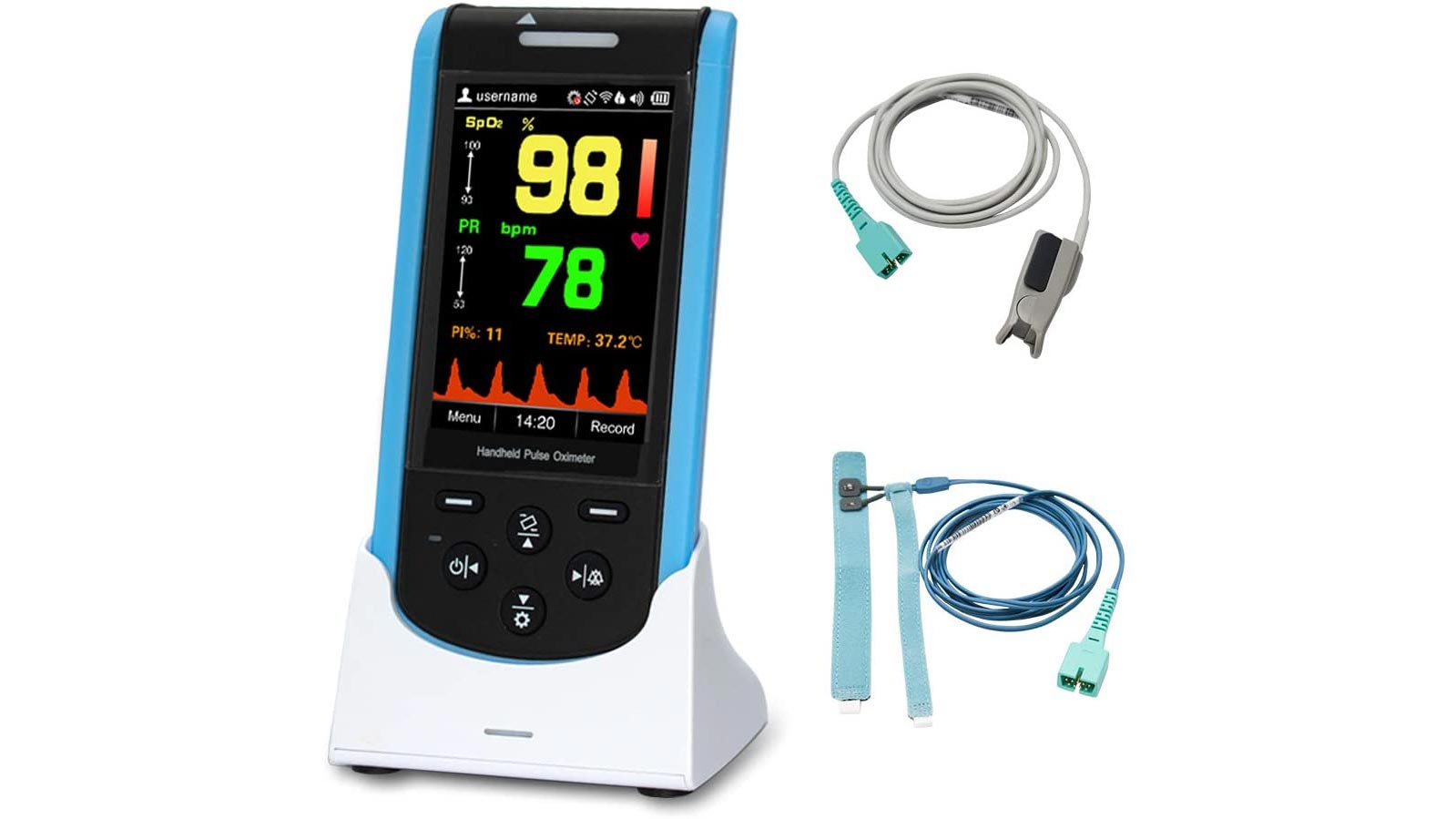
9. Viatom SP-20 Handheld Pulse Oximeter
Specifications
Reasons to buy
Reasons to avoid
Whether this tool is worth the investment depends a great deal on your needs; for many all the information required – with an error margin of only a few percent – is available from a clip-on device a tenth the cost. Here is a bigger display – suspiciously similar to your average Android phone – which presents the same information, plus pulse, more clearly and consistently, and can store it. Indeed it can keep collecting it without attachment to the charging dock. Dock? Sounds a bit phone-like too, and the display even has a horizontal mode. Still, that means there is good data sharing hardware; a PC app can download the tracked data even convert it into a PDF to print and share with visiting practitioners. The device’s software can handle up to 16 users and collects a trend record for those – the frequency is up to the user. Audio alerts will also be triggered by the SpO2 falling outside pre-set limits, making this device well suited to long-term care.

10. Wellue 20F
Specifications
Reasons to buy
Reasons to avoid
The Wellue 20F isn’t significantly pricier than some standard finger pulse oximeters, with the added bonus that it can connect to your phone – iOS or Android – to collect your data and graph it over time should you choose. There is a built-in memory for up to 12 uses, beyond which you’ll need connect to the app which can store it indefinitely. A device like this is cheaper and easier to share round the family than a sports watch (and suitable to take readings for anyone over twelve years old), so it is a handy way to assess family health and the option of Bluetooth data – while somewhat limited – might be an appealing to some given the minimal extra outlay. In tandem with the phone, up to ten hours of continuous data can be stored and graphed, and you can add notes about each data group too.
Read more
The best infrared thermometers
Get the Digital Camera World Newsletter
The best camera deals, reviews, product advice, and unmissable photography news, direct to your inbox!

With over 20 years of expertise as a tech journalist, Adam brings a wealth of knowledge across a vast number of product categories, including timelapse cameras, home security cameras, NVR cameras, photography books, webcams, 3D printers and 3D scanners, borescopes, radar detectors… and, above all, drones.
Adam is our resident expert on all aspects of camera drones and drone photography, from buying guides on the best choices for aerial photographers of all ability levels to the latest rules and regulations on piloting drones.
He is the author of a number of books including The Complete Guide to Drones, The Smart Smart Home Handbook, 101 Tips for DSLR Video and The Drone Pilot's Handbook.
